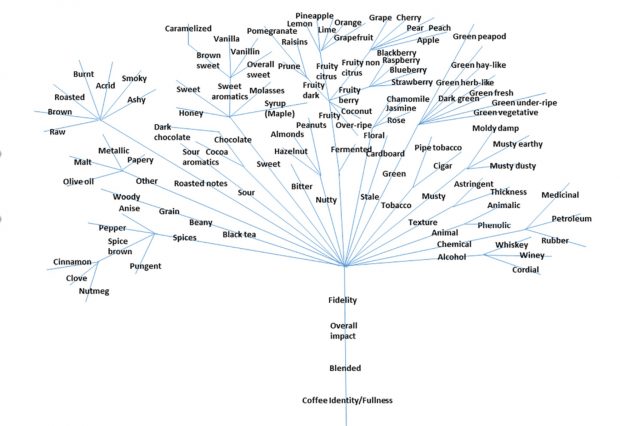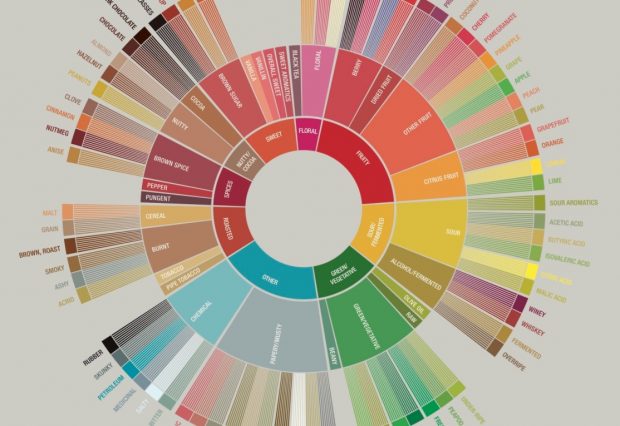A team of sensory analysis researchers who helped develop the World Coffee Research Sensory Lexicon has authored a fascinating new study on the “living” nature of the lexicon, while suggesting the limitations in representing it two-dimensionally.
Created at the Sensory Analysis Center at Kansas State University, the WCR lexicon contains a whopping 110 sensory attributes, and through the combined efforts of the SCA, WCR and researchers at UC-Davis and KSU, provided the foundation for the reinvented SCA Coffee Taster’s Flavor Wheel.
The wheel itself represents a practical, industry-focused application of the lexicon, in which professional coffee cuppers can quickly and easily identify related sensory attributes. The wheel has been lauded by professionals, and recognized as an unprecedented successful collaboration between science and industry in creating a visual representation of a lexicon.
Yet in an article published last month in the Society of Sensory Professionals’ Journal of Sensory Studies, researchers stress the idea that the lexicon reflects only the characteristics gleaned from the 105 coffee samples that were studied. They underscore its importance a a “living” document, with new additions or modifications — think new words in a dictionary — as new characteristics or associations are perceived.
They also open up something of a Pandora’s Box in suggesting that the lexicon could grow to accommodate additional characteristics based on any number of factors, such as additional coffee varietals, additional brewing methods, additional areas of origin, etc. WCR presents additional detail on the living nature of the document here.
The article also articulates the inherent limitations of visually presenting the lexicon in two-dimensional form. A fascinating recent NPR story digs deeper into lead author Edgar Chambers’ theories on the “multidimensional” nature of flavor. For the scholarly paper, the KSU team created not a wheel, but a tree, to begin to understand relationships between various categories and individual characteristics within the lexicon, writing:
This was the first approach to understand the relationships between attributes, and also the complexity of the categories that help describe the aromas and flavors present in coffee. There are other ways to organize the attributes, such as wheels, but some complexity in the dynamics of the attributes is lost in any two-dimensional way of organizing the attributes.
Without further ado, here’s the coffee taster’s flavor tree:

Tree Diagram showing relationships among attributes in a base, branch, and stem arrangement. The base of the tree represents the fundamental attributes associated with all samples, the major branches represent major categories of attributes, and smaller branches and stems represent progressively smaller categories and sometimes characteristics that are less often noted in coffee samples. Image and following caption from the Journal of Sensory Studies, shared with Creative Commons open access license.
Nick Brown
Nick Brown is the editor of Daily Coffee News by Roast Magazine.







Comment